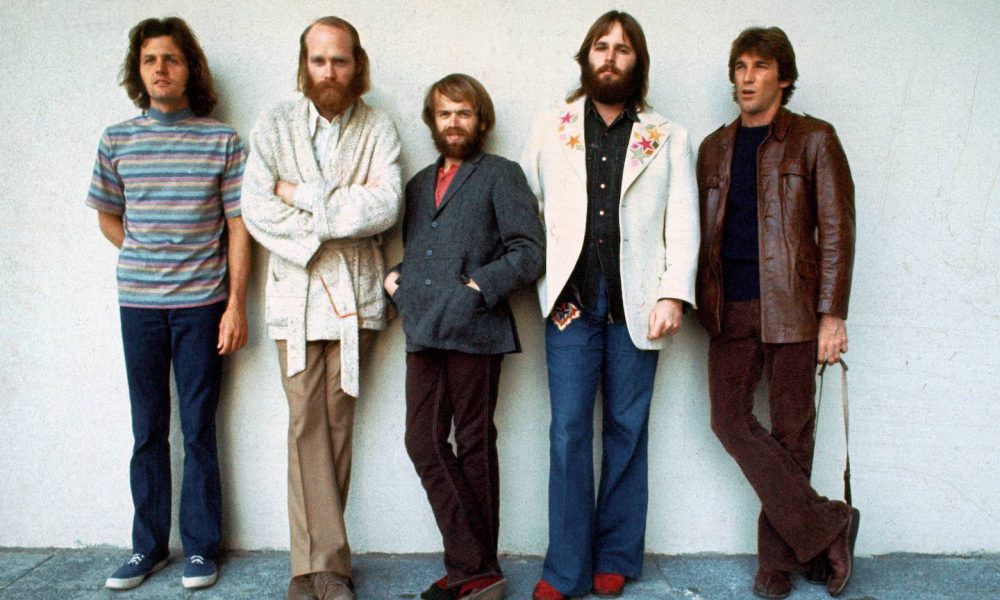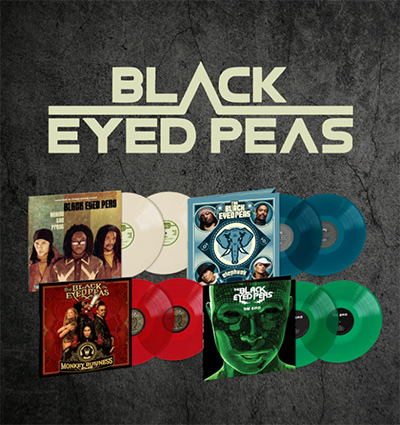How The Beach Boys Became The Godfathers Of Dream Pop
The further you dive into this period, the more connections you start to see in all the groups that followed them.

After the Aquarian Age came crashing to a halt, The Beach Boys put out a pair of albums that flew under the radar at the time. But as with a lot of the band’s catalog, people cottoned on to the greatness of 1970’s Sunflower and 1971’s Surf’s Up in fits and starts down through the decades. With the 2021 collection Feel Flows, documenting the sessions for those albums along with alternate mixes, demos, live recordings, and more, Sunflower and Surf’s Up are being embraced anew. One of the things that has been noted is the debt that the sweet, soft-focus sub-genre widely dubbed “dream pop” owes to some of that material.
For the last half-century, there’s been some subtle – and sometimes more prominent – instances of Beach Boys DNA detectable in pretty much every permutation of pop-rock. Just as trace elements of The Beatles’ musical breakthroughs have always remained prominent in the pop tapestry, the effect of the Fabs’ old American rivals has been felt at every evolutionary step.
The early 70s power pop of Todd Rundgren and Big Star; the pioneering punk of The Ramones and The Dictators; the 80s neo-psychedelic splashes of XTC and Game Theory; the 90s indie pop of Stereolab and the whole Elephant 6 collective (Apples in Stereo, Of Montreal, Olivia Tremor Control) – it would all sound very different if Brian Wilson had followed his father into industrial manufacturing instead of following his heart into music. But that’s only part of the story.
The impact of The Beach Boys’ 60s innovations, from their surf-rock days to the chamber-pop brilliance of Pet Sounds, is so vast you’d need a Ken Burns miniseries to fully document it. But by the decade’s end, things were getting increasingly complicated for the band, especially with Brian Wilson’s worsening mental health. Having checked himself into a psychiatric hospital, he was only minimally involved with the recording of The Beach Boys’ final 60s release, 20/20.
Business and personal troubles are part of the backstory of 1970’s Sunflower, but the band’s creativity was nevertheless in bloom. “All I Wanna Do” is one of the most obvious examples of the upswing, written by Brian with Mike Love, with lead vocals by the latter. In strict songwriting terms, there’s not an enormous distance between this Sunflower track and some of the songs on Pet Sounds, but the production puts it in a place all its own, with silky keyboards and guitars surrounding vocal wisps of smoke in what feels like the musical equivalent of a cinematic dream sequence.
This is where the dream pop family tree starts to come into focus. The further you dive into this period in the Beach Boys’ development, the more connections you start to see in all the groups that followed them.
“All I Wanna Do” isn’t alone on the album in its haziness – “Forever,” “Our Sweet Love,” and “At My Window” all seem a bit like sonic siblings. And the Sunflower sessions are partnered with those of Surf’s Up on the Feel Flows collection for more than just chronological reasons. Between the underwater feel of the anthology’s title track and the heaven’s-eye perspective of “Til I Die,” the kinship between the two albums is clear – even more so on the warmly glimmering Surf’s Up outtake “Big Sur.”
Flash forward from the Nixon era to the late 80s. Most people’s predominant picture of post-60s Beach Boys begins and ends with the tropical-vacation vibe of their recent comeback hit, “Kokomo.” But at the same time, restless indie rockers like the London band Lush and New England outfit Galaxie 500 (and by 1990, Mazzy Star) were eschewing edge and angst in favor of something soft and swirly that would eventually be dubbed “dream pop.”
About a decade later, dream pop and its sibling sub-genre, shoegaze, began to enjoy a revival that still hasn’t worn out its welcome. No séance was needed to detect some Beach Boys spirit when bands like Sweden’s Radio Dept. and French duo M83 began to mix their gauzy tones with the more bucolic side of Britpop and the gentle twinkle of ambient electronics, respectively.
By mid-decade, the dream-pop reservoir was filling up with acts like Panda Bear, Beach House, and A Sunny Day in Glasgow. Panda Bear, a.k.a. Noah Lennox, had already spent years building big, clattering avant-pop castles in the sky both with and without Animal Collective, and he was still hosting some experimental sounds on Person Pitch. But when the album opened with the overtly Wilson-esque, reverb-slathered sounds of “Comfy in Nautica,” even the least acute observers started drawing thick, brightly colored sharpie lines back to tracks like “All I Wanna Do” and its ilk (the influence is even more evident on the a cappella mixes available now on Feel Flows).
This was the period when Brooklyn was becoming the center of the musical universe for cutting-edge indie sounds, and the dream-pop underground bore that out by birthing bands like School of Seven Bells, The High Places, and Au Revoir Simone in and around Williamsburg. This particular crop turned out to be the most electronic-oriented, with strong eddies of synth-pop flowing into their current. But anybody who couldn’t hear the connection between, say, the harmonies of Au Revoir Simone’s Heather D’Angelo, Erika Forster, and Annie Hart, and those of Brian and the gang, must have been filling their headphones with wool.
In the 2010s, awareness of The Beach Boys’ early-70s achievements grew apace with the continuing evolution of the dream-pop nation. The sounds of the Sunflower/Surf’s Up period, and the prescient “All I Wanna Do” in particular, were widely touted for their continuing influence. Especially when the most unequivocally pop-based sounds in the stylistic continuum started coming to the fore, as realized by multi-instrumentalist Jack Tatum’s Wild Nothing, Canadian band Alvvays, and at times, even in the chart-topping ballades noir of Lana Del Rey.
When Feel Flows was released in 2021, it felt like a final acknowledgment. That influential but long underappreciated part of The Beach Boys’ legacy had finally been fully granted its time in the sun.
Buy or stream Feel Flows – The Sunflower and Surf’s Up Sessions 1969-1971.













Phil Miglioratti
December 29, 2021 at 10:28 pm
I’m 73; grew up – lived and died with each Beach Boys release.
It is a true joy to know both young and old fans of music recognize the accomplishments of The Beach Boys.
My blog is my journal of articles, phots, podcasts, that explore the spiritual dimension of their catalogue.
http://PrayForSurfBlog.blogspot.com